We save the tomato harvest on our own - tomato pests in the greenhouse and methods of dealing with them
Gardeners often wonder how to get a rich harvest of tomatoes and protect it from insect pests. There are many ways to control pests. However, not all of them are equally effective. The article contains the best protection methods that have been tried and approved by many summer residents.
What pests threaten tomatoes in a greenhouse?
Greenhouse plants are protected from cold, wind and burning sun rays. But in such conditions, many pests successfully live and reproduce, destroying the entire tomato crop. To combat them, you need to determine who exactly affected the tomatoes and select a specific means of action.
Scoop
This is a pest that affects a wide variety of crops. This insect also pays attention to tomato bushes.
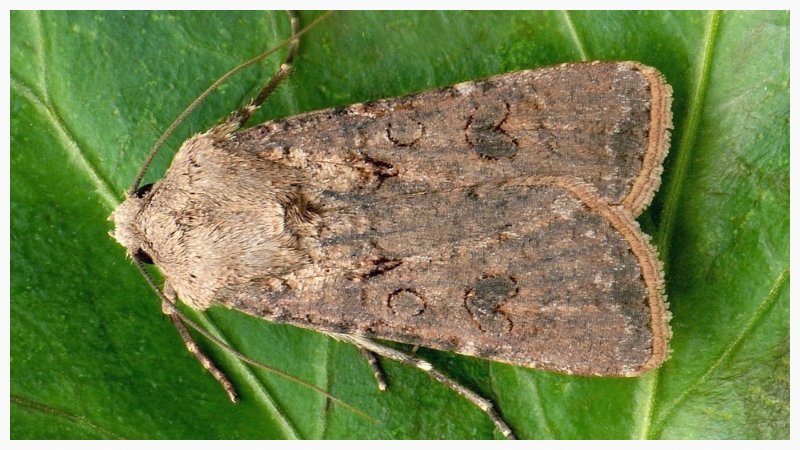
Scoop - a caterpillar that emerges from eggs. Eggs are laid by butterflies, leaving them on any parts of the plant. The transformation from egg to caterpillar occurs in 3-5 days. Caterpillars eat almost anything in sight, but are especially fond of tomatoes and their stems. Caterpillars eat huge holes in these vegetables, causing them to rot.
Whitefly
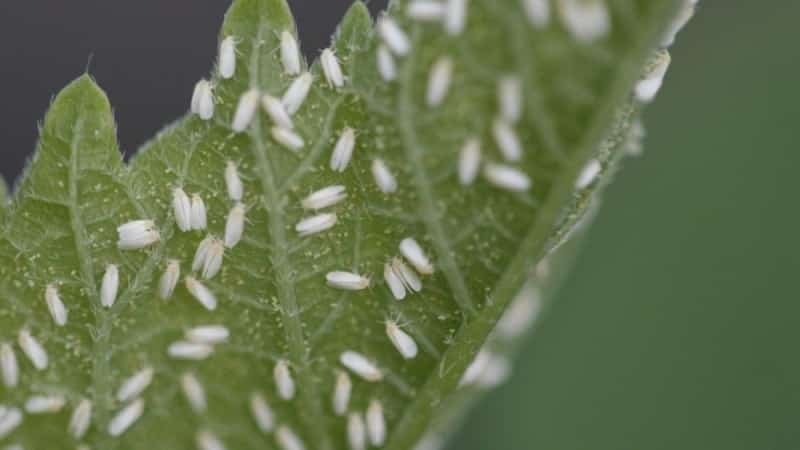
A microclimate is created in the greenhouse in which another dangerous pest thrives - whitefly. Warm air, high humidity levels and succulent plants - all this attracts insects and creates a favorable environment for reproduction and feeding.
In appearance, whiteflies resemble small light-colored moths. They suck the juice from the plant, which gradually begins to wither, becomes weak, and all its parts take on a sickly appearance.
The difficulty of diagnosis is that the whitefly skillfully hides. It settles on the inside of the leaves. Since the size of the insect is very small, it is difficult to notice. Under favorable conditions, the insect multiplies intensively and infects the plant even more.
Wireworm
This is a small caterpillar of bright orange color, 5-7 cm long. The majority of caterpillars settle on plants in April. In June they begin to lay eggs, from which new wireworms then emerge.
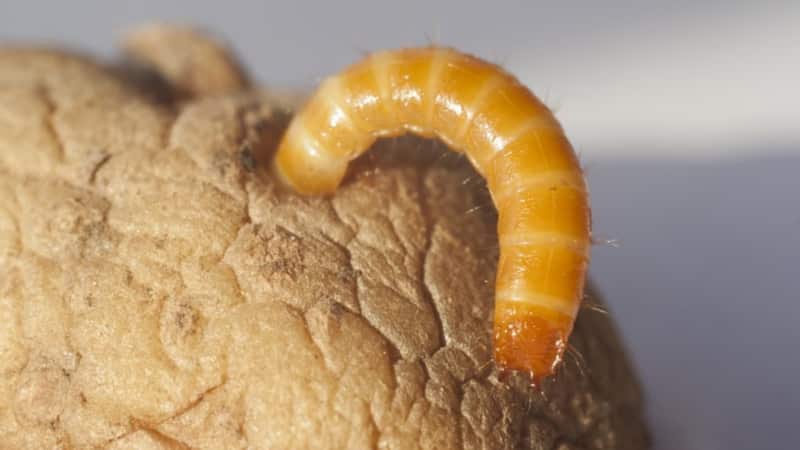 It is the larvae that are most harmful to tomatoes. They settle on young and fragile parts of the tomato and begin to eat them, making small holes in the foliage. The plant begins to gradually fade, turn yellow and dry out. A fungal infection settles in open areas of the plant damaged by wireworms. This contributes to even faster withering of the bushes.
It is the larvae that are most harmful to tomatoes. They settle on young and fragile parts of the tomato and begin to eat them, making small holes in the foliage. The plant begins to gradually fade, turn yellow and dry out. A fungal infection settles in open areas of the plant damaged by wireworms. This contributes to even faster withering of the bushes.
Spider mite
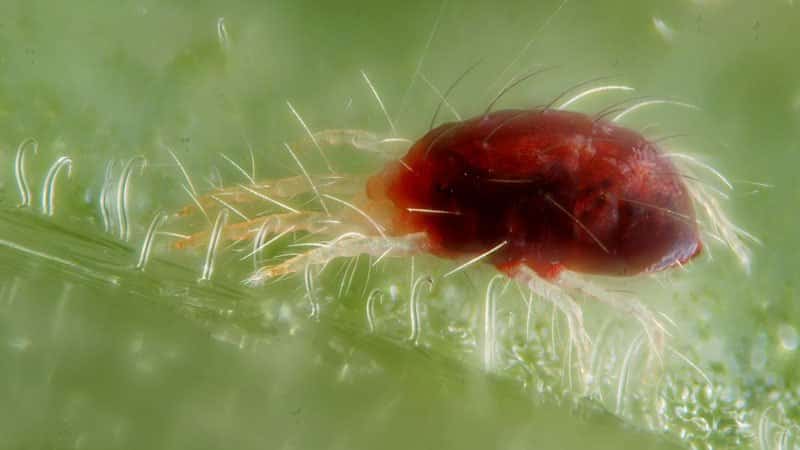
One of the worst pests that can live on tomatoes is spider mite The greenhouse maintains the most comfortable conditions for its existence - warmth and high humidity.
The presence of a mite can be determined by the presence of tiny white spots and cobwebs on the back of the leaf. Signs of spider mite damage include causeless curling of leaves, as well as a general sickly appearance of the plant. Over time, the diseased plant becomes weaker and dies.
Stink bug
There are a large number of types bedbugs-shield guards. The most dangerous bugs are green and gray.Their sizes are 5-7 mm, some reach 2 cm. The body is flattened, dark gray. A distinctive feature is that when touched, bedbugs begin to emit an unpleasant odor that is not easy to wash off.
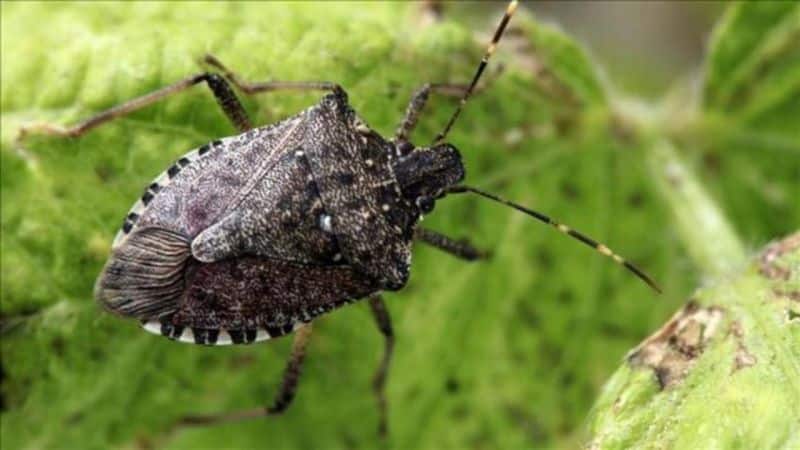 Bugs bite into the juicy stems of tomatoes and suck out the juice. At the same time, they inject their poison into the cavity of the stem and foliage. After such manipulations, spots remain on the stems, characteristic of stink bug infestation.
Bugs bite into the juicy stems of tomatoes and suck out the juice. At the same time, they inject their poison into the cavity of the stem and foliage. After such manipulations, spots remain on the stems, characteristic of stink bug infestation.
Medvedka
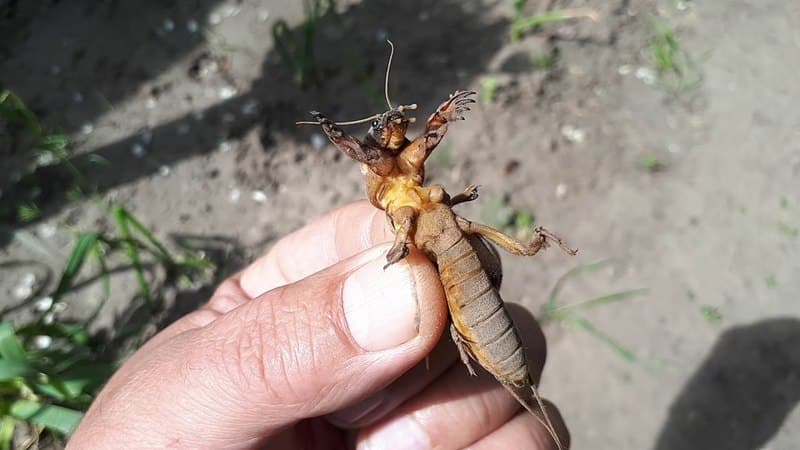
The mole cricket's body is dirty brown and has horns on its head. The limbs are small and have tentacles. The insect looks like a caterpillar, its size reaches 5-7 cm.
The mole cricket can destroy tomatoes as soon as you plant the seeds. Most often, it destroys the root part, which will lead to a gradual deterioration in the general condition of the tomatoes. First they stop growing, then they turn yellow and die.
Aphid
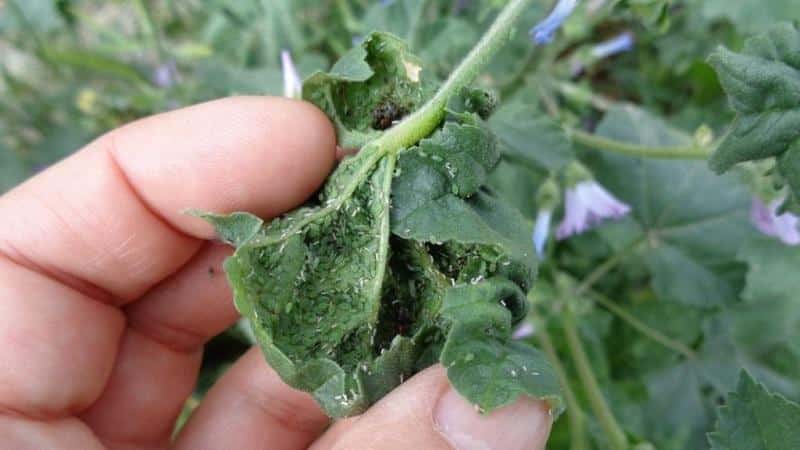
A dangerous pest that can completely destroy plantings. Aphids settle on the inside of the leaf. Later it spreads over the entire surface of the plant, and the fruits begin to die. Aphid leaves behind excrement that resembles black sugar-like clots. They attract other pests - flies and ants.
Signs of insect damage to tomatoes
The main signs that are observed when attacked by insects:
- cessation of plant growth;
- yellowing of some areas;
- leaf curling;
- general painful appearance;
- cessation of fruit growth;
- falling off parts of the plant or its fruits;
- presence of unknown insects or eggs.
If you find at least one of the above symptoms on your plant, you must immediately begin diagnosing the disease and selecting a drug for treatment.
How to deal with pests and diseases in a greenhouse
Primary disinfection of seeds before planting, preparing the soil and following the rules of crop rotation will save plants from many diseases. Every year, vegetable growers recommend replacing the top layer of soil in the greenhouse.
Mandatory conditions also include timely watering, pinching and fertilizing. But you can completely rid tomatoes of pests only by treating them with special means.
How and with what to process
Experts advise treating tomatoes with special solutions throughout their entire growth period. Treatment is carried out with fungicidal preparations. But this method of pest control must be stopped 2-3 weeks before the fruit begins to ripen.
Important. Chemicals used to control pests are dangerous to human skin and mucous membranes. Be sure to use protective equipment and thoroughly clean your hands and clothing after use.
Fighting methods
The choice of pest control method is based on the severity of the infestation and when the problem is identified. At the initial stages, folk remedies are acceptable, but in case of serious damage, the use of pesticides cannot be avoided.
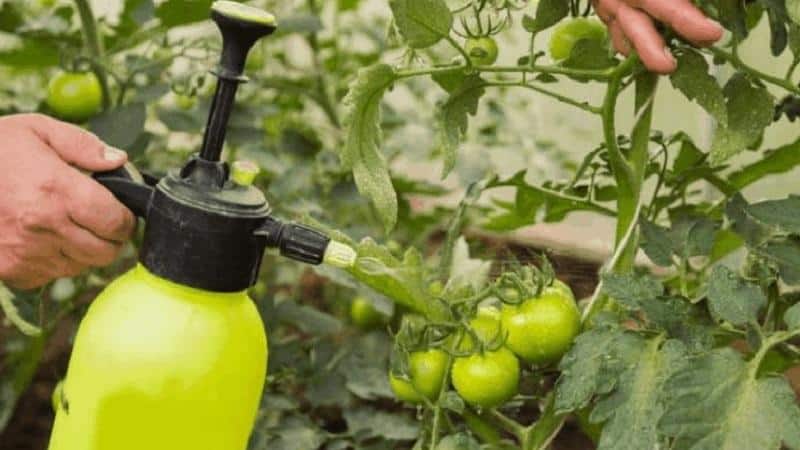
Chemical
These methods are used when others have proven ineffective. This is due to the fact that chemicals can get on the ripe fruits of the plant. By eating such tomatoes, you risk getting poisoned.
Attention. Do not exceed the applied amount of the drug, as this can lead to plant poisoning and wilting.
Chemicals are available in large quantities in specialized stores. The most popular are “Iskra”, “Molniya”, “Biotlin”, “Decis”, “Anti-mite”, “Karate”, “Inta-vir”.
Folk
Folk remedies are considered one of the most beloved among summer residents. They do not poison the plant, and the ingredients from which the solutions are made are usually found at home.
How to spray tomatoes:
- 1/2 cup of soda per 5 liters of water;
- 5 ml of iodine combined with 5 liters of water;
- tincture of garlic in water;
- 1 liter of kefir, diluted in 10 liters of water.
Biological
This is the most environmentally friendly method, which involves introducing other insects to the emerging pests. These could be ladybugs or thrips that eat harmful insects. There are fungal-based preparations that are used to treat plants to kill pests.
Agrotechnical techniques
This type of control involves timely weeding of the soil in the greenhouse and loosening it. Loosening saturates the soil with sufficient oxygen, which strengthens the plants. Weeding destroys weeds and removes rotting parts - a breeding ground for pests.
Preventive measures
Measures to prevent plant infection are always cheaper and less labor-intensive than treatment.
Protection against diseases and pests is provided by:
- disinfection of seeds and soil;
- timely removal of diseased plants;
- regular weeding;
- use of pest control solutions;
- regulation of the microclimate inside the greenhouse;
- timely watering.
Conclusion
Timely identification of tomato pests in a greenhouse is the key to successful control. Therefore, it is important to regularly inspect all parts of the tomatoes and properly care for the plants. When choosing a control method, rely on the specifics of the pest and the degree of damage to the plantings.